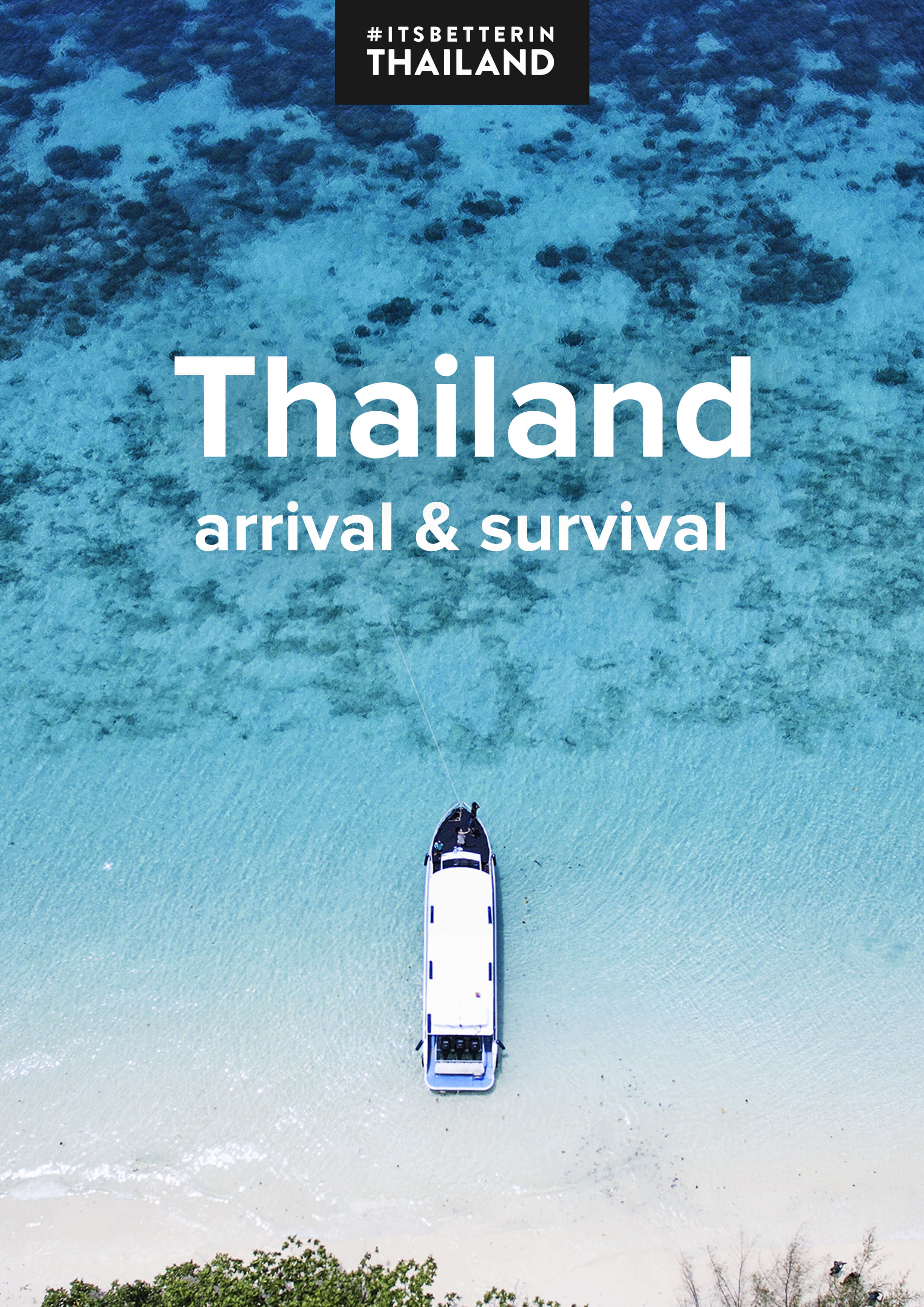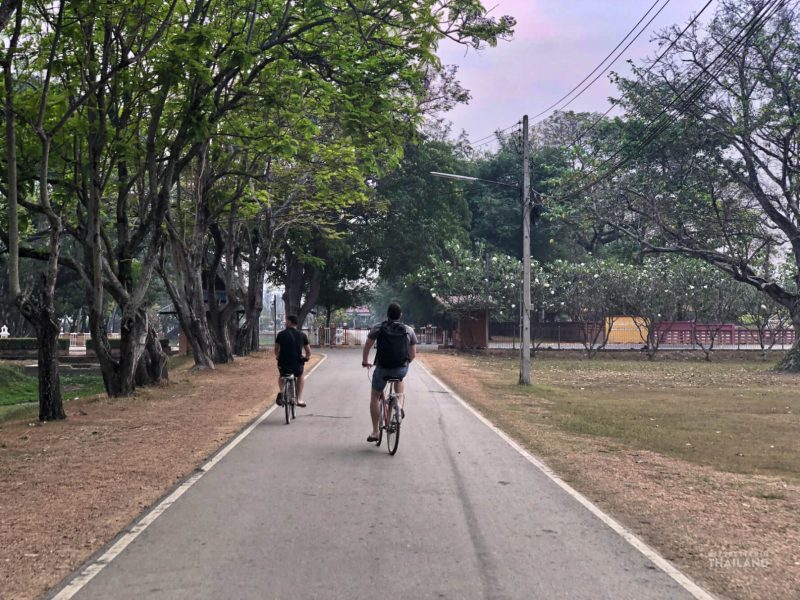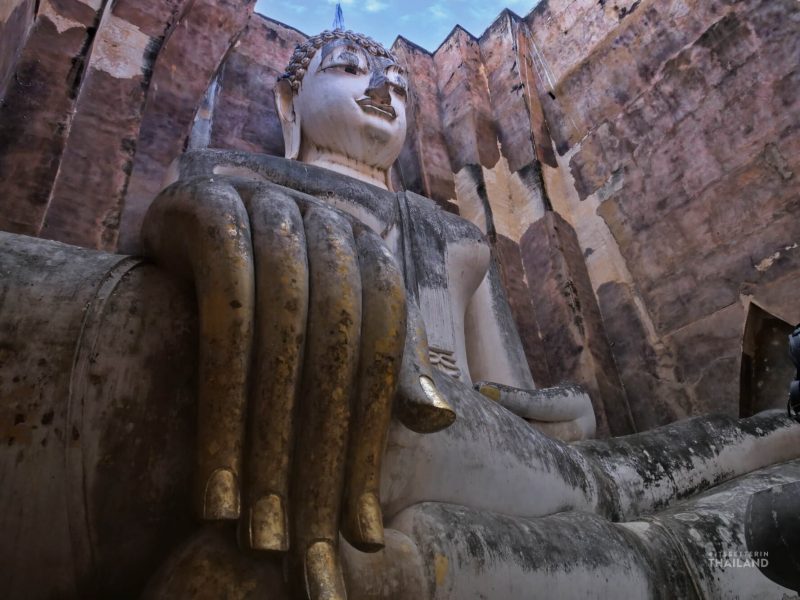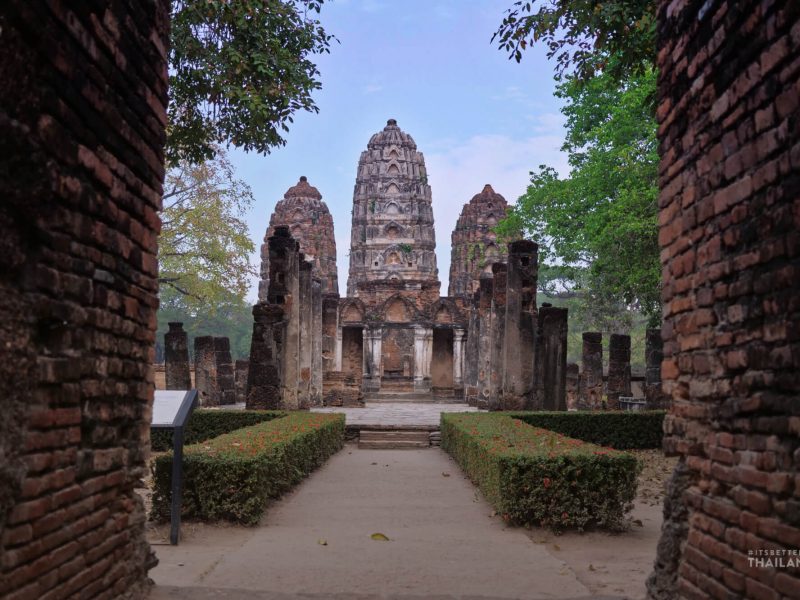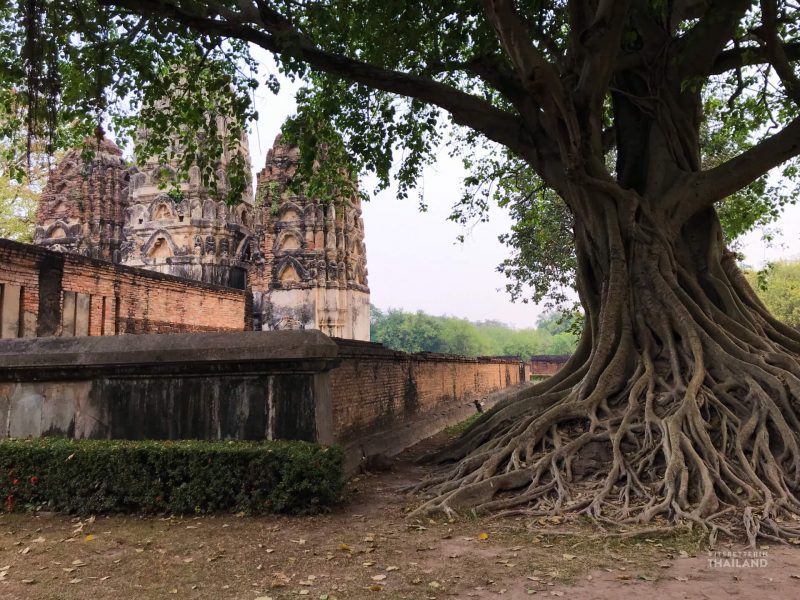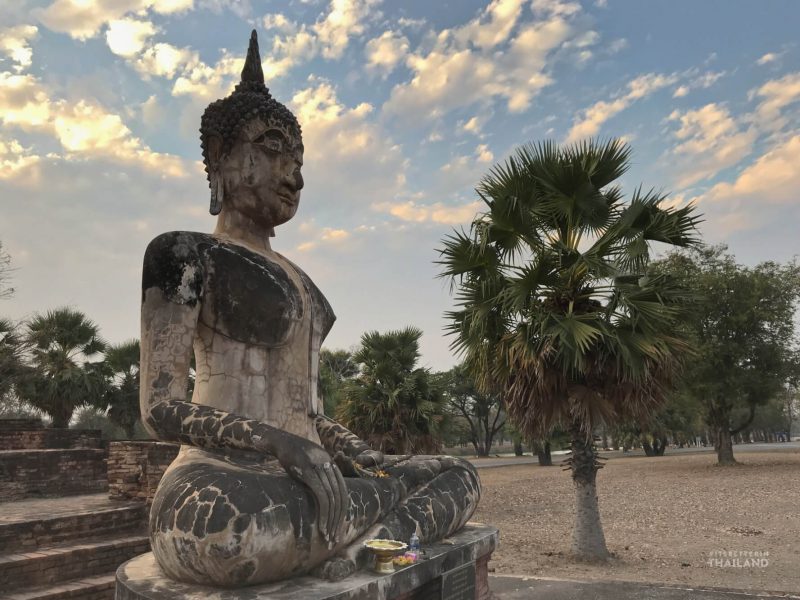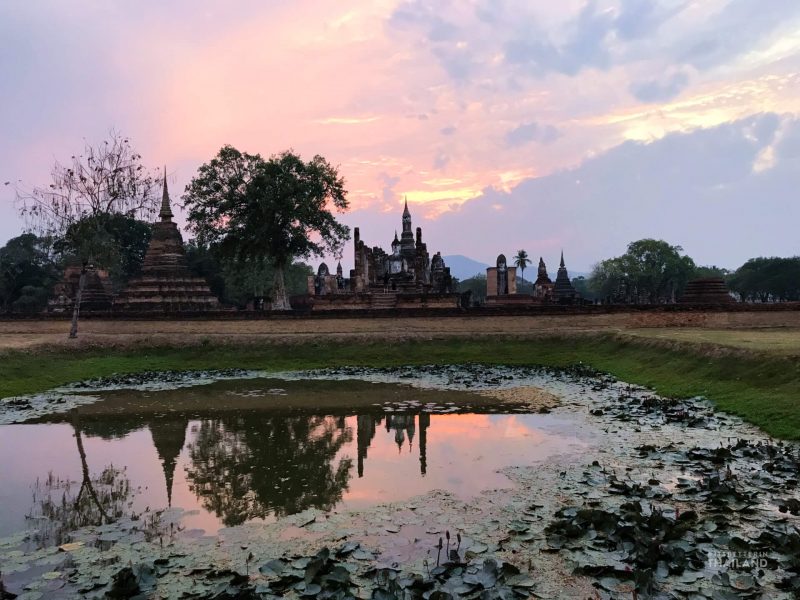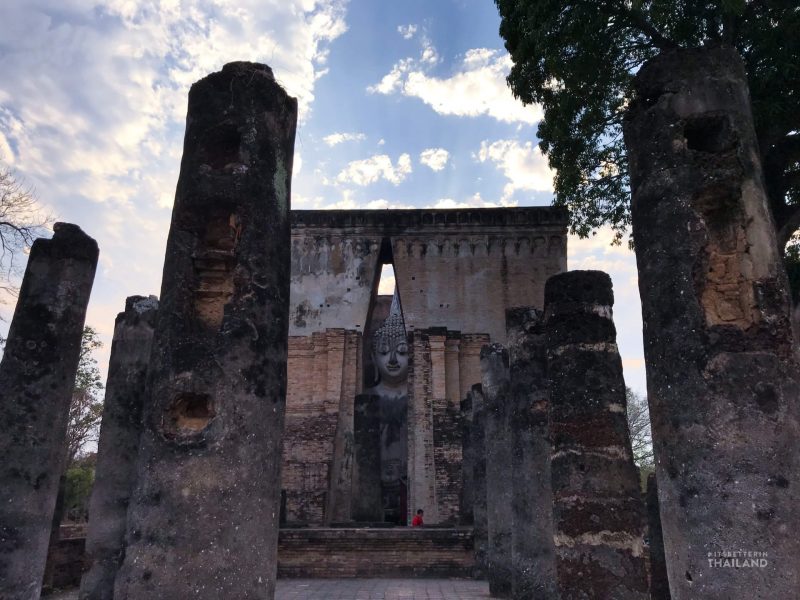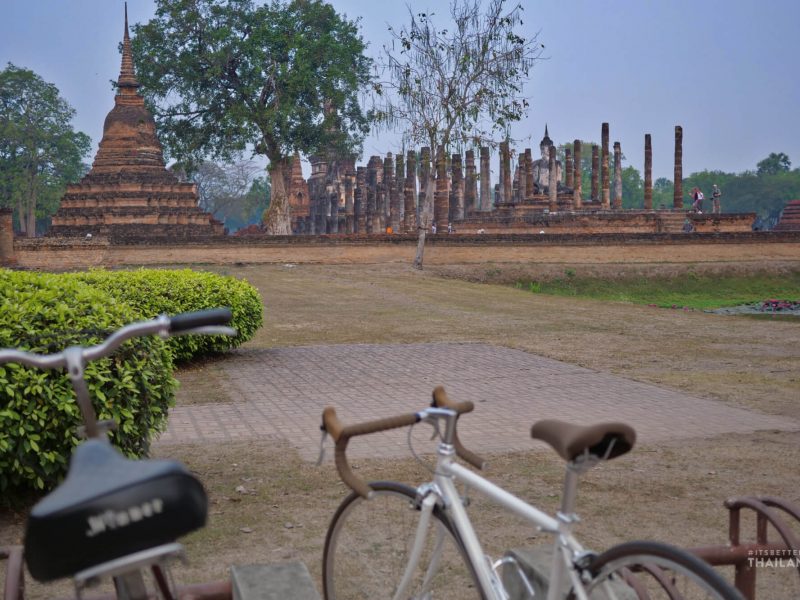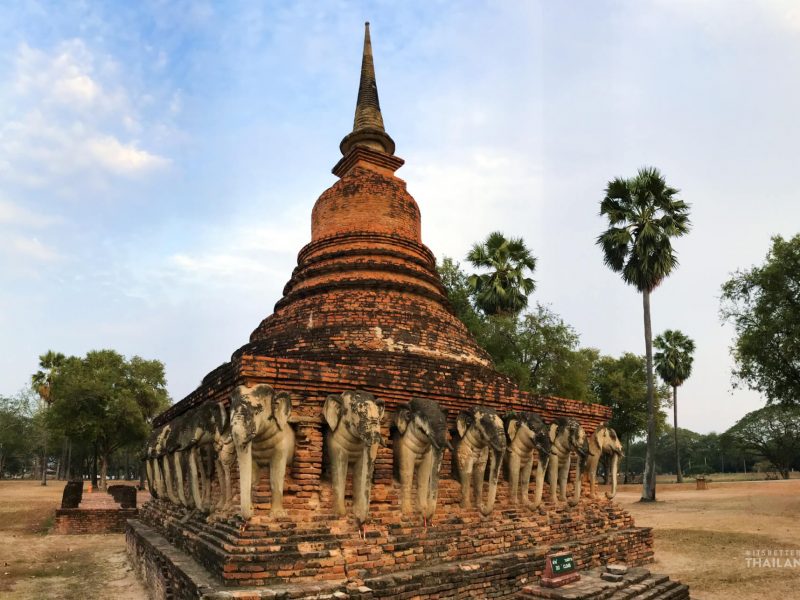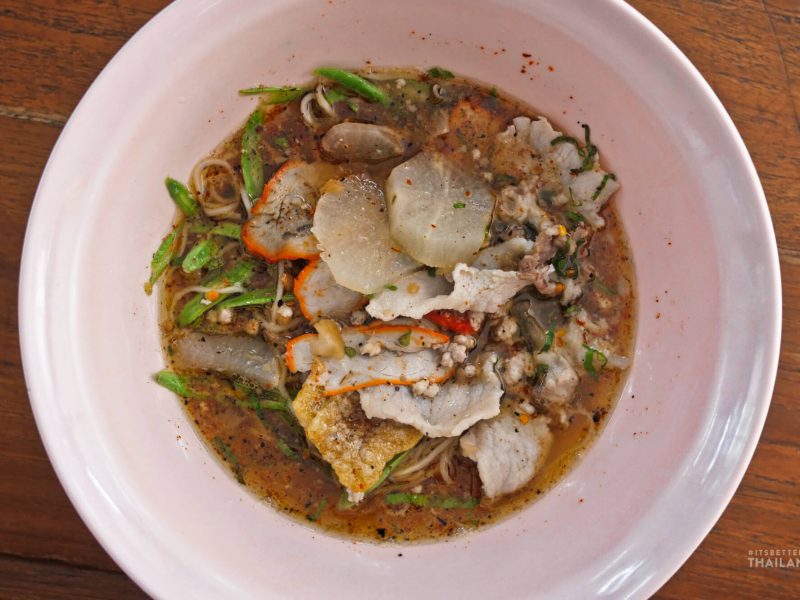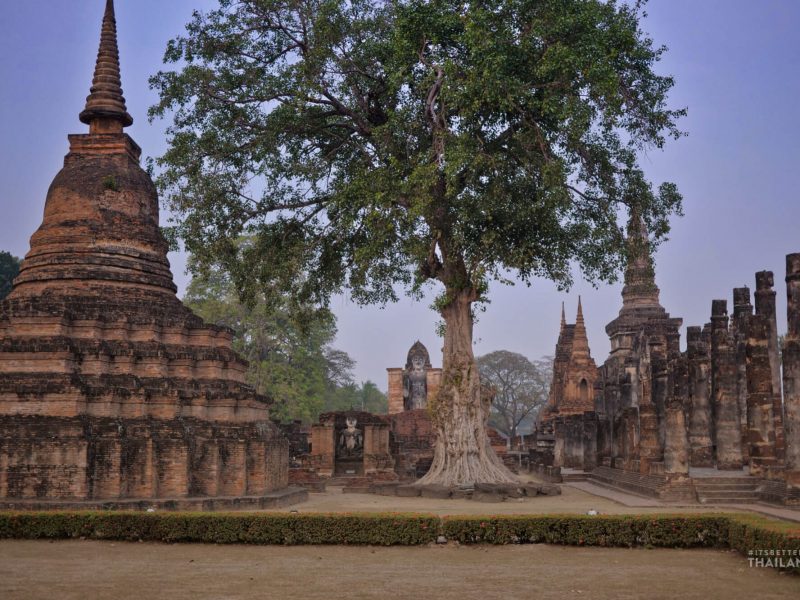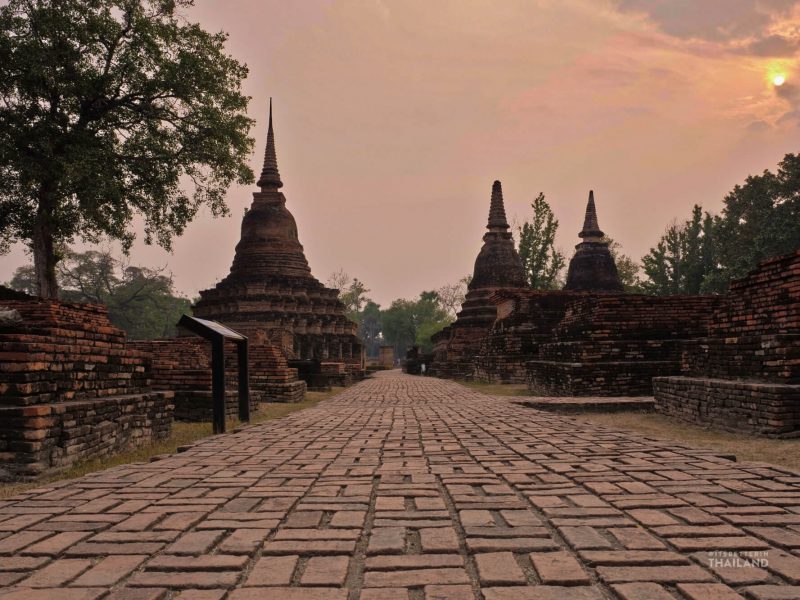Sukhothai
Sukhothai (สุโขทัย) is one of the most important places in Thai history. As the first capital of the Kingdom of Siam beginning 800 years ago, it has important ruins and archeological sites. The ancient capital is a Unesco Heritage Site and is well worth visiting, even for those who don't ordinarily love temples and history.
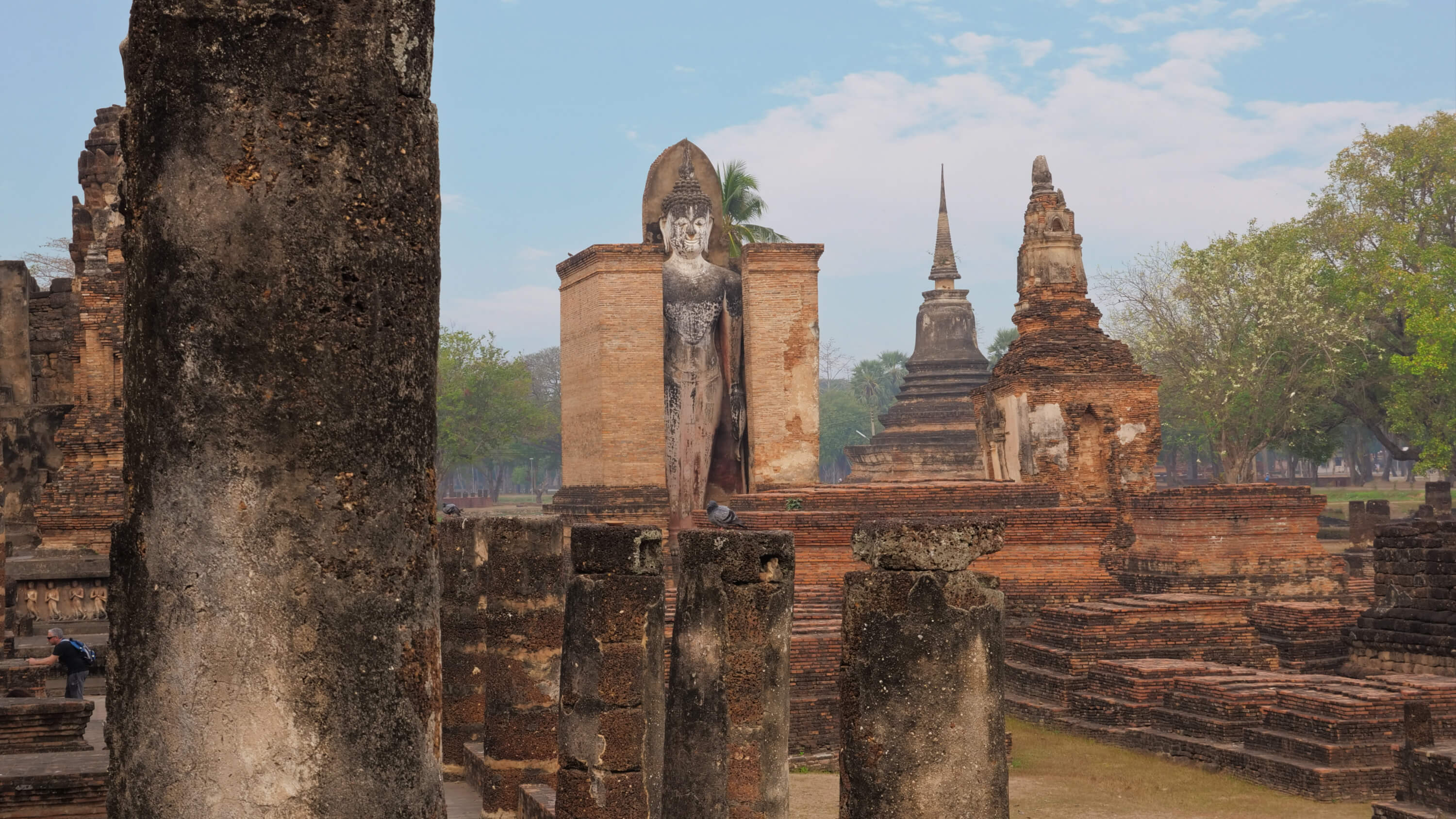
Introduction
Sukhothai is a province in the lower North of Thailand. The 13th Century Kingdom of Sukhothai is considered to be the first Kingdom of Siam, and the ruins of the ancient capital are the biggest draw for visitors to Sukhothai today. Seeing these ruins set on a flat plain covered in mango and tamarind trees is a great experience and we really recommend it to any travelers who have the time.
Note: For information on all the best temples and zones of ancient Sukhothai, check out our perfect itinerary for Sukhothai Historical Park.
Recommended for
Unless you’re a young backpacker just here to party, we recommend seeing either Sukhothai or the later Kingdom of Ayutthaya in Ayutthaya Province to get a sense of Thai history. If you don’t have time during your visit, this can definitely be skipped – it’s not quite the equivalent of Angkor Wat in Cambodia, but it really is a nice place to visit so make the time if you can.
Getting there
Sukhothai is located an hour west of the main north-south train line in Phitsanulok, and an hour east of the main north-south highway in Tak. Sukhothai Province is about two thirds of the way to Chiang Mai when traveling from Bangkok.
By bus – Buses to Sukhothai leave regularly from Chiang Mai going south, and from Mochit Northern Bus Terminal in Bangkok. From Bangkok, the journey takes six to seven hours. From the bus station in Sukhothai, you can take a shared songthaew (truck with two rows of benches in the back) toward accommodation in the old city or take a private taxi or tuk-tuk. There is also decent accommodation next to the bus station.
By plane – Bangkok Airways flies direct from Bangkok Suvarnhabumi (BKK) to Sukhothai. You can usually find a cheaper option by flying to Phitsanulok first. From Bangkok Don Meuang (DMK) Air Asia and Nok Air offer a fly and ride option that includes a minibus direct to Sukhothai from the airport, and back again if you go the other way. This is very convenient as the bus waits for the flight even if it’s late. Thai Lion Air also flies to Phitsanulok but currently does not offer transfer service.
By train –
Trains from Bangkok and Chiang Mai stop in Phitsanulok. From there you can take a tuk-tuk to the bus station and then a bus one hour to Sukhothai.
Where to stay
Text
We find our accommodation on Booking.com by first searching for the town or province and our dates, we then filter out any rooms with a score lower than 7 or 8 (depending on availability) as well as any rooms out of our budget. After this, we open the map and hover over all of the pins in the rough location we already decided we want to stay in. Hovering over the pins gives us the price for x nights plus the review score. We click on each pin to open those hotels in a new tab, review them and book our favorite.
Getting around
Sukhothai is divided between the old city and the new. Most tourists visiting for the historical ruins won’t have much reason to visit the new city. There’s nothing too special about it and it’s similar to most small to mid-sized Northern Thai cities. Still visiting places like this can be quite fun and open you up to experiences most other tourists miss.
By bicycle – if you stay near the old city, you can get pretty much everywhere you need to go by bicycle which you can rent at almost any hotel and guesthouse.
By tuk-tuk – Tuk-tuks are easy to find and can get you around anywhere you need to go. Make sure to always agree on a price before you get in.
By shared songthaew – There is a shared songthaew that makes regular trips between the old city and the bus station from morning until evening.
By motorbike – It’s easy to find motorbikes for rent at hotels in Sukhothai. There aren’t any hills in the city, but we still only recommend you ride if you have a bit of experience.
What to do
Sukhothai Historical Park – This is definitely the main attraction here and it’s absolutely worth seeing. The park is divided into five zones and a museum, and each of these has its own separate admission fee of 100 baht (150 for the museum). For most people, we recommend seeing two of the zones. Read more in our Sukhothai recommended itinerary.
Ramkhamhaeng National Park – A nice national park not far out of the city with camping, some trekking, and waterfalls in the rainy season.
Si Satchanalai Historical Park – This is another ancient city from the Sukhothai period and it’s nearly as big and impressive as the Sukhothai Historical Park but with way fewer visitors.
What to eat
Sukhothai is most famous for Sukhothai noodles. We had a pretty damn good bowl at Jae Hair Sukhothai Noodle.
Fitness & gym
B Fitness in the new city is a decent gym with good day rates. They open at 3pm every day.
Getting out
From Sukhothai, most travelers continue north to Chiang Mai, or south to Bangkok, but the city is fairly centrally located and you can get buses to any nearby provinces from here. Nature lovers can head west into the wilds of Tak Province.
Photo gallery
- Wat sits on an island
- Bring a wide lens if you want to get this shot, or use your phone to take a pano
- The Khmer-era Wat Si Sawai is a must-see here
- Wat at sunset
- Sunset at Wat Mahathat in the Central Zone
- Wat Si Chum in the evening light
- Bicycle is the best way to get around
- Wat Chang Lom at dusk
- Sukhothai noodles are a must-try here
- Wat Mahathat in the early morning light
When to go
Most of Thailand falls in to the generic high and low season categories, including Sukhothai.
High season - begins in November and runs through to February, bringing cooler temperatures, lush greenery from the previous months of rain, good air quality, and less rain. The downside is larger crowds and sometimes higher prices for tours, flights and accomodation.
Low season - begins in July and runs through to October. During low season the temperatures are higher, the chance of rain and storms are higher. That doesn't mean it's a bad time to visit though, if you can be flexible, there are deals to be found on flights and accomodation.
Destinations like Sukhothai in both northern and north eastern regions can be significantly cooler during the high/cool season than central and southern provinces like Bangkok or Phuket. It's a welcome and noticable change in season which may require a wardrobe change, especially at night.
As Sukhothai is in the northern/north eastern region, it's important you consider the smokey/burning season which affects the north, north east and sometimes central/eastern provinces. You can find more information for current and historical air quality on aqicn.org.
Need more? Read our post discussing the best time to visit Thailand.
Where to stay
Instead of recommending hotels, we think it will be more useful to share our process so you can pick based on your own critera for location, budget and style.
We always start our search on either Booking.com or Agoda. They have an easy to user interface and have some extra benefits for "Genius" and "VIP" users. You can also sometimes pay with credit card in advance if you're playing the cashback or air miles game.
Process:
- Search for specific province, city or town.
- Apply rating filters for a minimum rating or either 7, 8 or 9.
- Apply other filters: budget, fitness, breakfast, etc.
- If you have a specific location in mind, use map view to browse and make a final selection.
If there are too many properties available to choose from, increase the rating filter for less, higher rated selections.
Final notes: Prices are dynamic. Check the same hotel on both Booking.com and Agoda to see which has the best deal at any given time (go through to checkout to make sure all VAT and service charges are factored in). You can go one step further by calling the hotel and checking the price for booking directly. In our experience this saves money 50% of the time but you have less guarantees.
Emergency contacts
Knowing an emergency number could save your own, or somebody elses life. Take a photo or save these numbers on your phone:
Police & emergencies - 191
The most important number to remember. If the operator is unable to speak English, call 1155 (below).
Tourist Police - 1155 or (+66) 2308-0333
This hotline is available 24 hours a day and they will all speak English. This is an important phone number to remember - They will help you out with any concerns or questions you have and can redirect you to the correct number you may need.
Public Ambulance - 1669
Dialing this number will connect you to a public ambulance service, which will dispatch a vehicle to your location. The average response time for urban areas is around 10 minutes, but may take up to 30 minutes in rural areas. English-speaking staff should be available to assist you.
Fire Department - 199
In case of an emergency such as a house fire, or forest fire, call 199 for the Fire Department to be dispatched to your location.
Highway Police - 1193
If you plan on driving in Thailand, then you may end up needing to use this number if you break down in an unsafe place etc.
Activities
Our archive of activities and things to do in Sukhothai
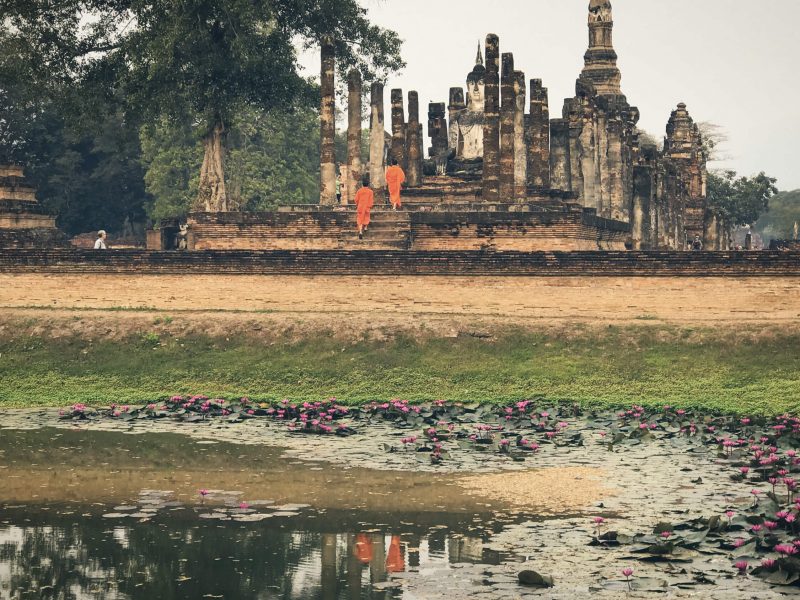
Sukhothai Historical Park – Highlights & our recommended 1 & 2 day itineraries
Ride a bicycle through ancient ruins on a plain of tamarind and mango trees

Sukhothai weekend night market amid the ruins
An excellent market set amid the ruins of Sukhothai Historical Park

Visiting Ramkhamhaeng National Museum in Sukhothai
A nice museum with some beautiful artifacts, but the curation leaves something to be desired
